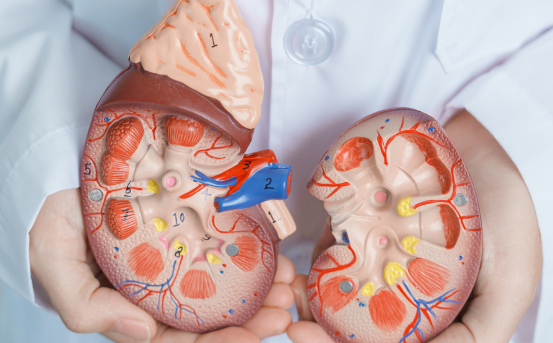Urologic oncology surgery refers to the treatment of cancers that affect the urinary tract and the male reproductive organs. These include cancers of the kidney, bladder, prostate, testicles, ureters, and adrenal glands. Among the most effective treatments for urologic cancers is surgery, often used either alone or in combination with chemotherapy, radiation therapy, or immunotherapy.
Whether detected early or at an advanced stage, urologic cancers often require a tailored surgical approach to achieve optimal results. Depending on the type, size, location, and progression of the tumor, various surgical methods may be employed. These range from minimally invasive procedures like robotic-assisted surgery and laparoscopy to more traditional open surgeries when necessary.
What Is Urologic Oncology Surgery?
Urologic oncology surgery involves surgical procedures performed to diagnose, stage, or treat cancers in the urinary or male reproductive systems. These surgeries are performed by specialized surgeons called urologic oncologists, trained to handle cancers such as :-
-
Kidney cancer
-
Bladder cancer
-
Prostate cancer
-
Testicular cancer
-
Ureteral cancer
-
Adrenal gland tumors
Thanks to advancements in technology, many of these surgeries can now be performed using minimally invasive techniques, such as laparoscopy or robotic-assisted surgery, which offer shorter recovery times and fewer complications.
Types of Urologic Oncology Surgery
Radical Prostatectomy
What It Treats :-
-
Prostate cancer
Procedure :-
A radical prostatectomy involves the removal of the prostate gland and some surrounding tissue, including the seminal vesicles. There are multiple approaches :-
-
Open prostatectomy :- Traditional surgery with an incision.
-
Laparoscopic prostatectomy :- Minimally invasive, with small incisions.
-
Robotic-assisted prostatectomy :- Enhanced precision using robotic instruments.
Benefits :-
-
Effective in early-stage, localized prostate cancer.
-
Preserves continence and sexual function in many cases when nerve-sparing techniques are used.
Recovery :-
-
Hospital stay :- 1–3 days.
-
Catheter use :- About 1 week.
-
Return to normal activity :- 4–6 weeks.
Nephrectomy
What It Treats :-
-
Kidney cancer
Types :-
-
Partial nephrectomy :- Only the tumor or affected portion of the kidney is removed.
-
Radical nephrectomy :- Entire kidney, adrenal gland, and nearby tissue are removed.
Procedure :-
This surgery may be performed via open surgery or minimally invasive techniques (laparoscopic or robotic). The decision depends on tumor size, location, and patient health.
Benefits :-
-
Preserves kidney function if partial nephrectomy is used.
-
High success rates in localized kidney cancers.
Recovery :-
-
Hospital stay: 2–4 days.
-
Full recovery: 4–8 weeks depending on approach.
Cystectomy
What It Treats :-
-
Bladder cancer
Types :-
-
Partial cystectomy :- Only the cancerous portion of the bladder is removed.
-
Radical cystectomy :- Entire bladder is removed, often along with nearby lymph nodes and part of the urethra or prostate (in men).
Urinary Diversion Options :-
After radical cystectomy, urinary diversion techniques are required :-
-
Ilea conduit :- Uses a piece of the intestine to divert urine to an external pouch.
-
Neobladder :- Creates a new bladder from intestinal tissue.
-
Continent reservoir :- Internal pouch with catheterization.
Recovery :-
-
Hospital stay :- 5–10 days.
-
Full recovery :- 6–8 weeks.
Orchiectomy
What It Treats :-
-
Testicular cancer
Procedure :-
A radical inguinal orchiectomy involves removing the affected testicle through an incision in the groin, not the scrotum, to avoid spreading cancer cells.
Benefits :-
-
Diagnostic and therapeutic.
-
Often the first step in managing testicular cancer.
Recovery :-
-
Hospital stay :- Often same-day or overnight.
-
Return to normal activity :- 2–3 weeks.
-
Prosthetic testicle insertion is optional for cosmetic purposes.
Adrenalectomy
What It Treats :-
-
Adrenal tumors, including cancerous growths and hormone-producing tumors
Procedure :-
The adrenal gland is removed via open or laparoscopic surgery. Adrenalectomy is often required when a tumor is cancerous or overproducing hormones like cortisol or adrenaline.
Benefits :-
-
Reduces symptoms caused by hormone imbalance.
-
May prevent metastasis or further complications.
Recovery :-
-
Hospital stay :- 1–3 days.
-
Return to activity :- 2–4 weeks.
Urethrectomy
What It Treats :-
-
Cancer of the ureter (tube that carries urine from kidney to bladder)
Procedure :-
May involve removal of a section or the entire ureter along with surrounding tissue and part of the kidney or bladder. In some cases, reconstruction is required.
Benefits :-
-
Localized removal of cancerous ureteral tissue.
-
May preserve kidney function.
Recovery :-
-
Hospital stay :- 3–5 days.
-
Full recovery :- 4–6 weeks.
Lymph Node Dissection
What It Treats :-
-
Metastatic urologic cancers, especially prostate and testicular cancers
Procedure :-
Lymph nodes are removed from the pelvic or retroperitoneal region to assess the spread of cancer or as part of curative treatment.
Benefits :-
-
Accurate cancer staging.
-
Improved prognosis when cancer is confined to lymph nodes.
Recovery :-
-
Hospital stay :- 1–3 days.
-
Return to normal activity :- 4–6 weeks.
Minimally Invasive and Robotic-Assisted Surgeries
Growing Preference :-
Most urologic oncology surgeries today are moving toward robot-assisted or laparoscopic techniques due to their precision, smaller incisions, and faster recovery.
Key Benefits :-
-
Less blood loss
-
Reduced post-op pain
-
Shorter hospital stays
-
Quicker return to daily activities
Factors That Influence Surgical Approach
The choice of surgical technique and procedure depends on several factors :-
-
Stage and type of cancer
-
Patient’s age and general health
-
Size and location of the tumor
-
Surgeon’s expertise
-
Availability of technology (e.g., robotic systems)
Your urologic oncologist will work closely with you to choose the safest and most effective treatment option.
Preparing for Urologic Oncology Surgery
Before surgery, patients undergo :-
-
Blood and urine tests
-
Imaging (CT, MRI, PET scan)
-
Anesthesia evaluation
-
Counseling about risks, benefits, and recovery
Patients are often advised to stop certain medications, maintain hydration, and follow pre-operative fasting guidelines.
Life After Urologic Cancer Surgery
Recovery varies depending on the surgery type and individual patient factors. Common post-surgery advice includes :-
-
Light physical activity like walking
-
Avoid lifting heavy objects
-
High-fiber diet to avoid constipation
-
Regular follow-ups and imaging
-
Sexual health counseling if needed
Some patients may need chemotherapy or radiation post-surgery to ensure complete cancer control.
Conclusion
Understanding the types of urologic oncology surgery can help patients feel more informed and confident when facing treatment decisions. With continuous advancements in minimally invasive techniques, these surgeries are becoming safer, more precise, and more effective than ever before.






















